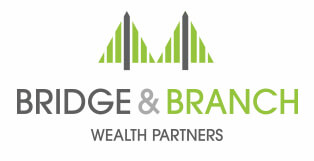The Setting Every Community Up for Retirement Enhancement (SECURE) Act, passed into law in December 2019, had significant implications for business owners and employees regarding retirement savings and tax rules.
With some of SECURE Act 2.0’s provisions starting in 2024, business owners must know how it may impact their situation. SECURE Act 2.0 features a host of potential changes for 2024, including adjustments to RMD rules, auto-enrollment retirement plans, changes to catch-up contribution rules, increased annuity options, and other new provisions to help employees pursue financial independence. Here are the details of each provision to remain compliant with the Act.
1. Adjustments to Required Minimum Distributions (RMDs)
The SECURE Act 2.0 would amend the required minimum distributions (RMDs) rules. Under the original SECURE Act, the age at which individuals had to start taking RMDs from their retirement accounts increased from 70 ½ to 72.
SECURE Act 2.0 further extends this age to 73, beginning in 2024. This amendment impacts retirement plans and obligations concerning employee retirement benefits and the new RMD age.
2. Auto-enrollment in 401(k) plans
Starting in 2024, the SECURE Act 2.0 proposes that employers automatically enroll their employees in their 401(k) plan. While employees can opt out, the objective is to encourage more employees to save for retirement. Additionally, employers must establish efficient systems for automatic enrollment and provide clear information to their employees about this change.
3. Amendments to catch-up contribution rules
The SECURE Act 2.0 also proposes that employees aged 50 and older can make additional catch-up contributions of up to $7500 into their employer-sponsored retirement savings plan. Employers must adjust their retirement plan terms to account for this change and educate their employees about the new rules.
4. Increased annuity options
The SECURE Act 2.0 also includes provisions to increase annuity options within individual retirement accounts (IRAs) and 401(k) plans. This development aims to give retirees an income stream during their retirement years through the annuity option within their retirement account. Business owners must familiarize themselves with new annuity options and potentially roll out new retirement plans or update their plan’s strategies to include additional annuity options in early 2024.
5. New Roth 401(k) RMD rules
Participants in a Roth 401(k) no longer need to take required minimum distributions (RMDs), which conforms to the rule that already applies to Roth IRA account owners.
6. Employee student debt relief
Employers can now offer student debt relief through workplace retirement plans, such as 401(k)s, by matching contributions toward an employee’s student loan repayments. The employee elects the employer to match their loan versus their employer-sponsored retirement savings plan. However, the employee must continue participating in the employer-sponsored retirement plan to receive the employer’s match toward their student debt.
7. Employee emergencies and savings accounts
Emergency funds provision
Starting in 2024, employees can withdraw up to $1,000 penalty-free from IRAs or 401(k)s for emergencies, regardless of whether the person has reached age 59½.
Emergency savings accounts
Emergency savings accounts within retirement plans can now be offered to employees who contribute (on an after-tax basis) to that account within the retirement savings plan. However, a participant’s emergency savings account balance may only be $2,500 at most.
Domestic violence provision
Employees under age 59 ½ who are experiencing domestic violence can take up to $10,000 from their IRAs or 401(k)s without paying the 10% penalty.
With the SECURE Act 2.0 in view for 2024, business owners must prepare for and implement the above provisions. Business owners must understand the implications of these changes, educate their employees accordingly, and adjust their retirement plan documents to ensure they comply or face penalties at tax time.
8. Roth IRA employer contributions
Traditionally, employer matches are made with pre-tax dollars that go into an employee’s pre-tax account, such as a traditional 401(k). Starting in 2024, employers can make matching contributions into an employee’s Roth 401(k), where the monies will grow tax-free, with tax-free distributions in retirement. This new provision is optional, and employers may still elect to make pre-tax matches.
The proposed SECURE Act 2.0 is still a work in progress and will change in the coming years. Therefore, business owners are encouraged to update their retirement savings plan based on the above provisions for 2024 and work toward more provisions rolling out through 2033. Business owners must work with financial and tax professionals and their retirement plan sponsors to remain informed and prepared for each new year’s SECURE Act 2.0 provision rollout through 2033.
In summary, the SECURE Act 2.0 solidifies the need for business owners to prepare for its implications. By understanding the new adjustments to RMDs, auto-enrollment, amendments to catch-up contributions, and the increase in annuity options, business owners can ensure that they comply and that their employees are suitably prepared for a comprehensive retirement.
Sources:
https://www.kiplinger.com/taxes/tax-planning/secure-20-retirement-savings-changes
https://www.natlawreview.com/article/secure-20-series-part-3-retirement-plan-required-minimum-distribution-age-to
https://time.com/personal-finance/article/what-is-the-secure-act-2-0/
Important Disclosures
Content in this material is for educational and general information only and not intended to provide specific advice or recommendations for any individual.
This information is not intended to be a substitute for individualized legal advice. Please consult your legal advisor regarding your specific situation.
All information is believed to be from reliable sources; however, LPL Financial makes no representation as to its completeness or accuracy.
This article was prepared by Fresh Finance.
LPL Tracking #521665

